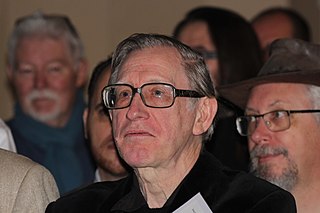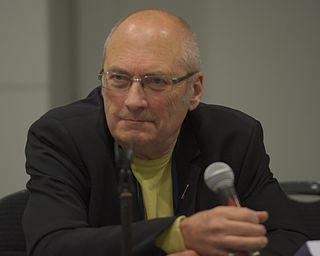Cyberpunk is a subgenre of science fiction in a futuristic setting that tends to focus on a "combination of lowlife and high tech" featuring advanced technological and scientific achievements, such as artificial intelligence and cybernetics, juxtaposed with a degree of breakdown or radical change in the social order. Much of cyberpunk is rooted in the New Wave science fiction movement of the 1960s and 1970s, when writers like Philip K. Dick, Roger Zelazny, John Brunner, J. G. Ballard, Philip José Farmer and Harlan Ellison examined the impact of drug culture, technology, and the sexual revolution while avoiding the utopian tendencies of earlier science fiction.

New Worlds was a British science fiction magazine that began in 1936 as a fanzine called Novae Terrae. John Carnell, who became Novae Terrae's editor in 1939, renamed it New Worlds that year. He was instrumental in turning it into a professional publication in 1946 and was the first editor of the new incarnation. It became the leading UK science fiction magazine; the period to 1960 has been described by science fiction historian Mike Ashley as the magazine's "Golden Age".
This is a bibliography of the works of Michael Moorcock.
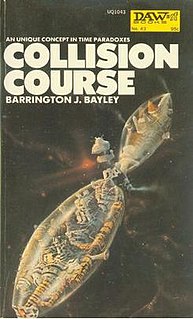
Collision Course is the fourth novel by the science fiction author Barrington J. Bayley. The novel was inspired by the multiple time dimensions proposed by J. W. Dunne. The plot centers on the collision of two alternate "presents", with disastrous implications for reality.

The Fall of Chronopolis (ISBN 0-87997-043-X) is the fifth novel by the science fiction author Barrington J. Bayley. It details the eternal conflict through time between the Chronostatic Empire and its enemy, the Hegemony.

The Grand Wheel is the eighth science fiction novel by Barrington J. Bayley. The novel follows Cheyne Scarne, a professor of "randomatics", as he is selected by the eponymous organization to represent humanity in a card game with infinitely varying rules. The name of the main character appears to be a reference to John Scarne.

Annihilation Factor is the second science fiction novel by Barrington J. Bayley, expanded from a 1964 short story originally published in New Worlds. It centres on the strains placed on a galactic empire by the appearance of the mysterious, planet-devouring "patch".

Empire of Two Worlds is the third science fiction novel by Barrington J. Bayley. The main characters are "tankless" inhabitants of a dim and dry colony world who attempt to find a lost gateway back to Earth.

Star Winds is the ninth science fiction novel by Barrington J. Bayley. In the future Solar System of the novel, humans travel through space using solar sails and, as with much of Bayley's work, alchemy and other pseudosciences play a role alongside more conventional technology.

The Soul of the Robot is the sixth science fiction novel by Barrington J. Bayley, featuring the character Jasperodus from his 1956 story "Fugitive". The book tells of Jasperodus, the only robot with a soul, as he attempts to prove that he is the equal of the humans around him. It was published in 1974 by Doubleday, with a revised version published in 1976 by Allison and Busby.
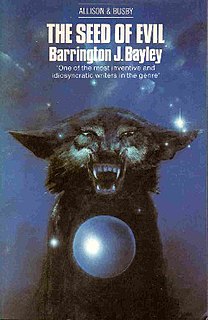
The Seed of Evil is the second science fiction collection by Barrington J. Bayley. The book collects thirteen short stories published between 1962 and 1979, several of which are original to this volume.

The Rod of Light is the thirteenth science fiction novel by Barrington J. Bayley and his only sequel. The book continues the story of Jasperodus, who is now in conflict with Gargan, a ruthless robot attempting to make his own soul.

The Sinners of Erspia is the fifteenth science fiction novel by Barrington J. Bayley. The main character is the interstellar courier Laedo, who is stranded on the bizarre artificial planetoid Erspia. The novel focuses on his attempts to gain an understanding of Erspia and Erspia's creator, the god-like Klystar. The novel was completed in 1997 and was first published as a print-on-demand book in 2002.
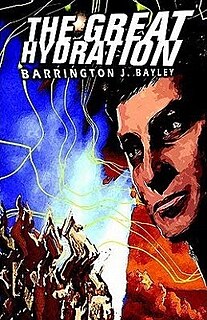
The Great Hydration is the sixteenth and last science fiction novel by Barrington J. Bayley. The book was written in 1998 and first published as a print on demand edition in 2002. The book features the illegal traders Krabbe and Bouche, the first humans to reach the planet of Tenacity, as they proceed to destroy the planet's anhydrous economy in an attempt to make a quick profit.
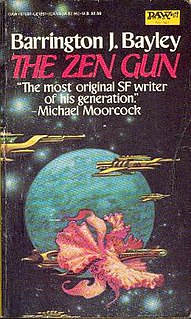
The Zen Gun is the eleventh science fiction novel by Barrington J. Bayley.
The multiverse is a series of parallel universes in many of the science fiction and fantasy novels and short stories written by Michael Moorcock. Central to these works is the concept of an Eternal Champion who has potentially multiple identities across multiple dimensions. The multiverse contains a legion of different versions of Earth in various times, histories, and occasionally, sizes. One example is the world in which his Elric Saga takes place. The multiplicity of places in this collection of universes include London, Melniboné, Tanelorn, the Young Kingdoms, and the Realm of Dreams.



